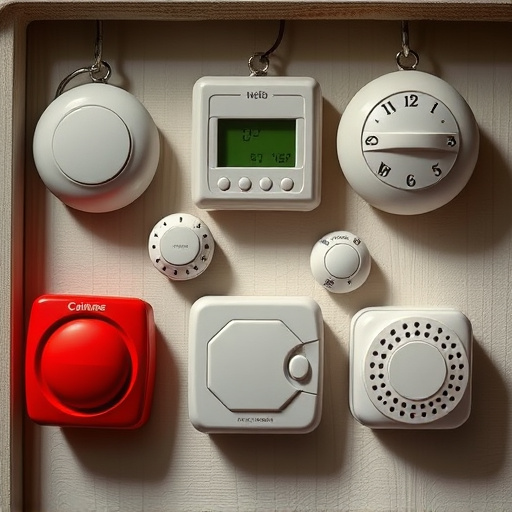Wearable Personal Alarms for Seniors offer hands-free, discreet protection with swift alarm response, enhanced peace of mind, and advanced features like GPS tracking & automatic fall detection. These devices empower seniors to alert emergency services via simple button press, providing quick location identification and reassurance for both seniors & loved ones. Regular training, monitoring via mobile apps, and open communication further bolster senior safety.
In today’s digital era, ensuring the safety of our elders is a priority. Electronic personal safety alert systems, particularly wearable personal alarms for seniors, offer peace of mind and enhanced security. This article explores the multifaceted benefits of these devices, delving into their key components, efficient emergency response integration, and best practices to guarantee continuous protection. Understanding these aspects can empower us to make informed decisions about senior safety.
- Understanding Wearable Personal Alarm Benefits
- Key Components of Effective Senior Safety Systems
- Integrating Technology for Efficient Emergency Response
- Best Practices for Ensuring Continuous Senior Protection
Understanding Wearable Personal Alarm Benefits
Wearable personal alarm devices offer a unique and innovative solution for maintaining senior safety in various settings, whether at home or outdoors. These compact, hands-free gadgets provide an added layer of security, empowering seniors to protect themselves discreetly. The benefits are significant, especially for those living alone; a simple press of a button triggers a loud alarm, alerting neighbors, care givers, or emergency services, ensuring swift response times in case of distress.
For the elderly, who might face mobility issues or be at higher risk of accidents, these alarms can provide peace of mind. They are designed to be user-friendly, often with simple controls and clear indicators, making them accessible for seniors to use independently. With advanced features like GPS tracking and automatic fall detection, wearable personal alarms offer comprehensive protection, enhancing the quality of life for seniors while giving their loved ones added reassurance.
Key Components of Effective Senior Safety Systems
Senior safety systems, often incorporating wearable personal alarms for seniors, are designed to provide peace of mind and quick response times in case of emergencies. The key components of an effective system include real-time monitoring, immediate alert notification, and easy-to-use activation mechanisms.
Wearable devices, such as buttons or pendants, allow seniors to trigger alerts discreetly with just a press. These signals are then transmitted to a central monitoring station or emergency contacts, enabling swift action. Additionally, integration of GPS tracking ensures precise location identification, while fall detection sensors can automatically alert care providers or family members if a senior experiences a sudden fall, enhancing overall safety and responsiveness.
Integrating Technology for Efficient Emergency Response
In today’s digital era, integrating technology has become a game-changer in enhancing personal safety, especially for vulnerable populations like seniors. A Wearable Personal Alarm for Seniors is a prime example of how innovation can revolutionize emergency response. These advanced devices are designed to be discreet and easily accessible, allowing individuals to quickly alert loved ones or emergency services in case of distress. With the push of a button, these alarms send out signals that include GPS coordinates, enabling swift location and rescue.
The efficiency of such systems lies in their ability to connect users directly to response teams, eliminating the need for lengthy phone calls or manual reporting. This technology is particularly valuable for seniors who may live alone and are at higher risk during emergencies. By integrating wearable alarms into their daily lives, individuals can gain a sense of security, knowing that help is just a button press away.
Best Practices for Ensuring Continuous Senior Protection
Ensuring continuous senior protection requires a multi-faceted approach leveraging modern technology, such as wearable personal alarms for seniors. One best practice involves regular training and education sessions to familiarize elderly individuals with the alarm’s functionality. These sessions should cover how to activate the alarm in various emergency scenarios, promoting proactive response rather than reactive.
Additionally, establishing a robust monitoring system is vital. Caregivers or family members can utilize mobile apps linked to wearable alarms to receive alerts in real-time when an elderly person triggers the alarm. Regular check-ins and communication between seniors and their support network further enhance protection, ensuring immediate assistance during unexpected events.
A wearable personal alarm for seniors is no longer a luxury, but an essential tool in ensuring their safety and independence. By integrating advanced technology into these devices, we can create efficient emergency response systems that provide continuous protection. Key components include user-friendly design, automatic fall detection, and immediate alert functionality. Following best practices such as regular maintenance and training ensures optimal utilization, making it a game-changer in navigating the challenges of an aging population.
